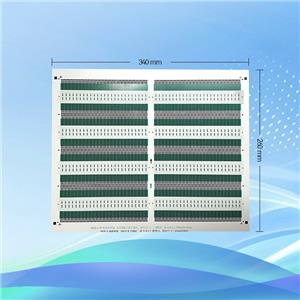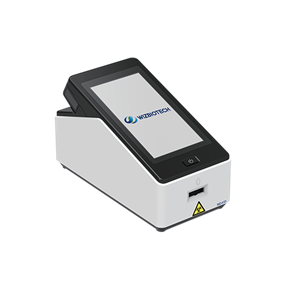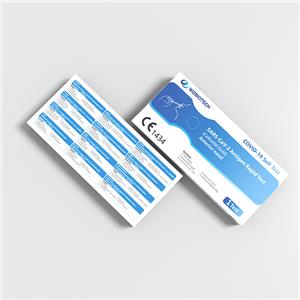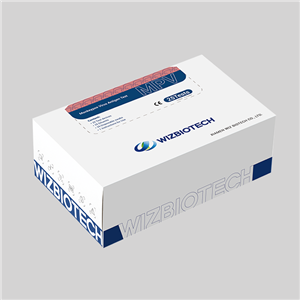New Clinical Consensus Released in China: HbA1c Point-of-Care Testing Gains Further Support
In June 2025, Laboratory Medicine and Clinical published the Expert Consensus on the Clinical Application of Point-of-Care Testing for Glycated Hemoglobin. Developed by leading Chinese experts in laboratory diagnostics and endocrinology, the document provides a standardized framework for the use of HbA1c POCT in both hospital and primary care settings.
As Southeast Asian nations like Malaysia and Thailand continue to strengthen their diabetes management programs, this consensus offers timely guidance on how HbA1c point-of-care testing can be safely and effectively implemented in community clinics and outpatient environments.
12 Key Consensus Statements
Below is a translated summary of the 12 major consensus points presented in the Chinese document:
Consensus 1: Immunoassays are suitable for primary screening. Boronate affinity chromatography meets the accuracy requirements for clinical use. Optical methods are preferred for high-end laboratories due to diagnostic-grade precision. Biosensor and microfluidic integration technologies represent future trends. Together, these four methods form a layered POCT system for diabetes management.
Consensus 2: Specific clinical scenarios are recommended for each of the four testing methods: immunoassay, boronate affinity chromatography, optical methods, and biosensor/microfluidic integration. See Table 1 in the original document for details.
Consensus 3: In primary care institutions such as township health centers and community clinics, as well as emergency bedside testing, HbA1c POCT should be prioritized for high-risk diabetes screening. Abnormal results should be confirmed via HPLC laboratory methods. For adults, a general HbA1c control target is <7.0%, with adjustments based on clinical characteristics.
Consensus 4: Primary care institutions should be equipped with standardized POCT devices, implement quality control systems, train personnel, and ensure interoperability of regional health data. Potential interfering factors should be assessed before testing; HPLC confirmation is recommended when necessary.
Consensus 5: In resource-limited settings, POCT devices that are traceable to IFCC reference methods and NGSP-certified are recommended. Manufacturers must provide documentation of traceability. In larger institutions, suitable systems can be selected based on laboratory needs.
Consensus 6: For scenarios requiring rapid results—such as emergency rooms, bedside testing, and rural clinics—POCT devices can be used. Reports must clearly indicate “POCT” and specify method-related interference, reminding clinicians to interpret results in context with patient history.
Consensus 7: It is recommended that primary care institutions link POCT data to patients’ electronic health records via regional information systems, ensuring continuity of care. Frequent follow-ups are advised for patients with poor glycemic control.
Consensus 8: Institutions must establish proper workflows for specimen handling and result management. Staff should be trained in sample collection, abnormal result handling, and interdisciplinary communication to ensure accurate and reliable outcomes.
Consensus 9: Before testing, clinicians should assess whether patients have hemoglobinopathies, anemia, or other interfering factors. This is especially important in POCT settings. Abnormal results should be interpreted using red blood cell parameters (e.g., MCV, MCHC) or genetic testing. Treatment decisions should not be based solely on HbA1c results in acute conditions.
Consensus 10: Medical institutions should establish POCT comparison programs, conducting regular cross-checks with central laboratories. The bias between POCT and laboratory results should fall within acceptable limits.
Consensus 11: Strict quality control procedures should be implemented for POCT (daily QC, periodic calibration). Use of matched QC materials is recommended to avoid batch variation. Staff should be regularly trained and evaluated. In resource-limited settings, emphasis should be placed on device maintenance and real-time quality monitoring through regional digital platforms.
Consensus 12: Regional health information platforms should facilitate data sharing to enhance continuity in diabetes care.
Implications for Southeast Asia
The Chinese consensus reflects growing global consensus: HbA1c POCT is essential for decentralized diabetes control. For countries like Malaysia and Thailand, where rural populations and clinic workloads pose barriers to lab access, point-of-care testing offers:
Faster diagnosis and follow-up
Increased testing coverage
Lower burden on central laboratories
With rising rates of type 2 diabetes in Southeast Asia, ensuring accurate and traceable POCT tools at the community level is no longer optional—it's critical.
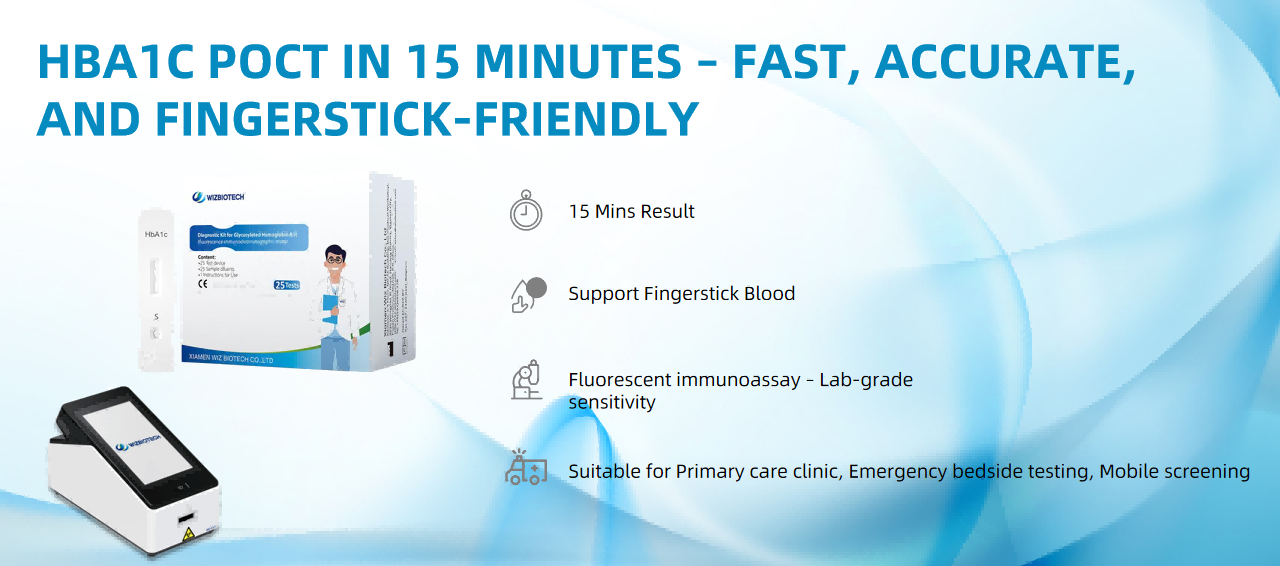
To align with these global clinical priorities, wizbiotech offers a fluorescent immunoassay-based HbA1c POCT platform that:
Requires only fingerstick blood
Provides results in 15 minutes
Supports use in primary care, mobile screening, or emergency settings
Designed for accuracy and ease-of-use, our system enables medical staff to test, interpret, and respond—all during a single patient visit.

